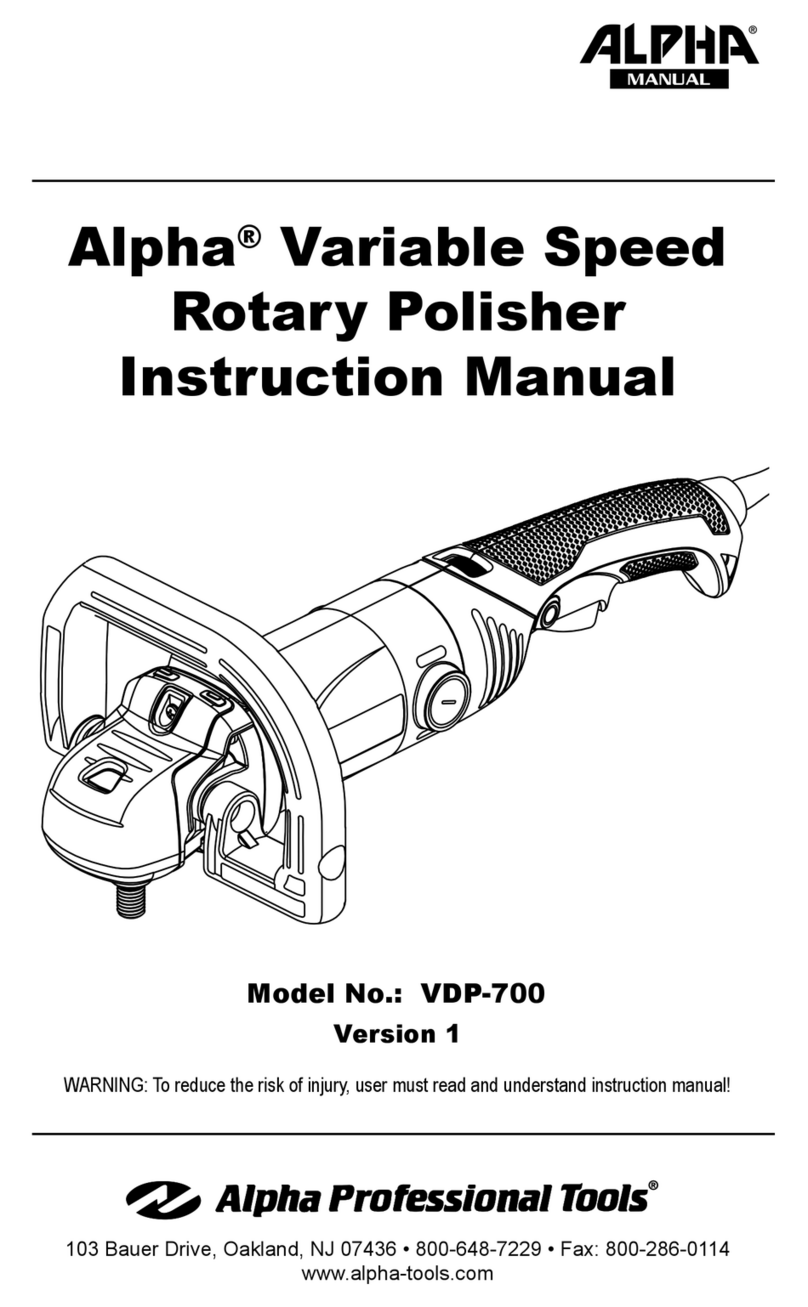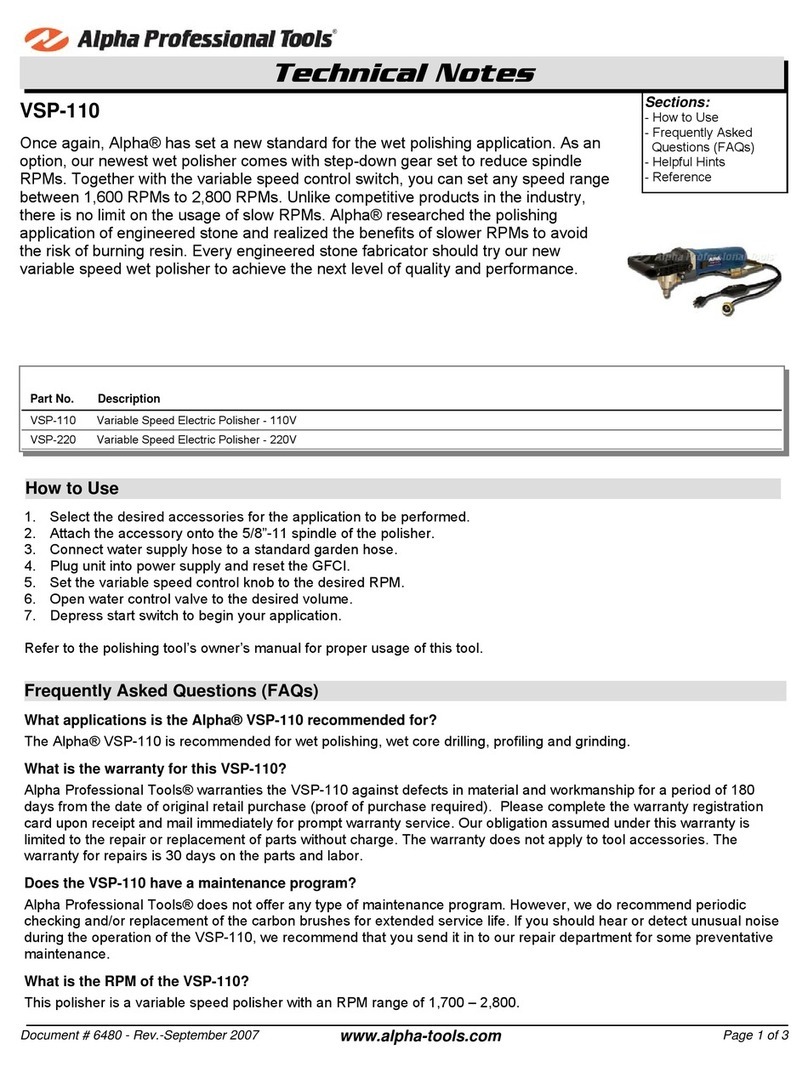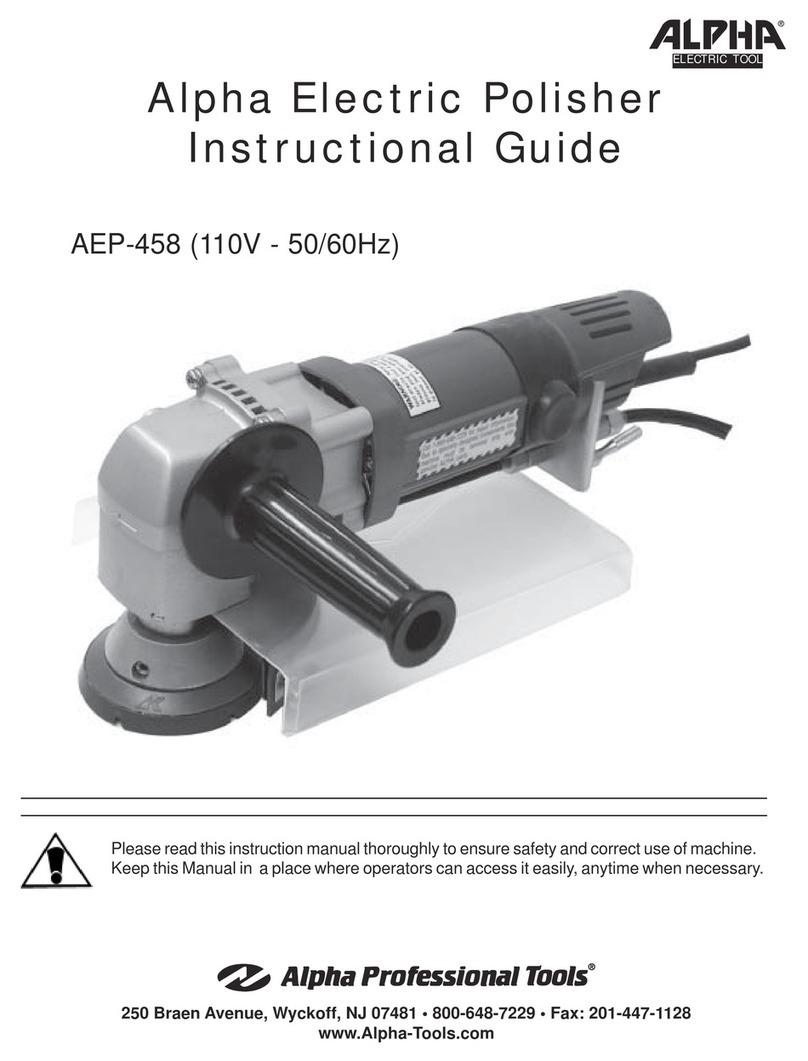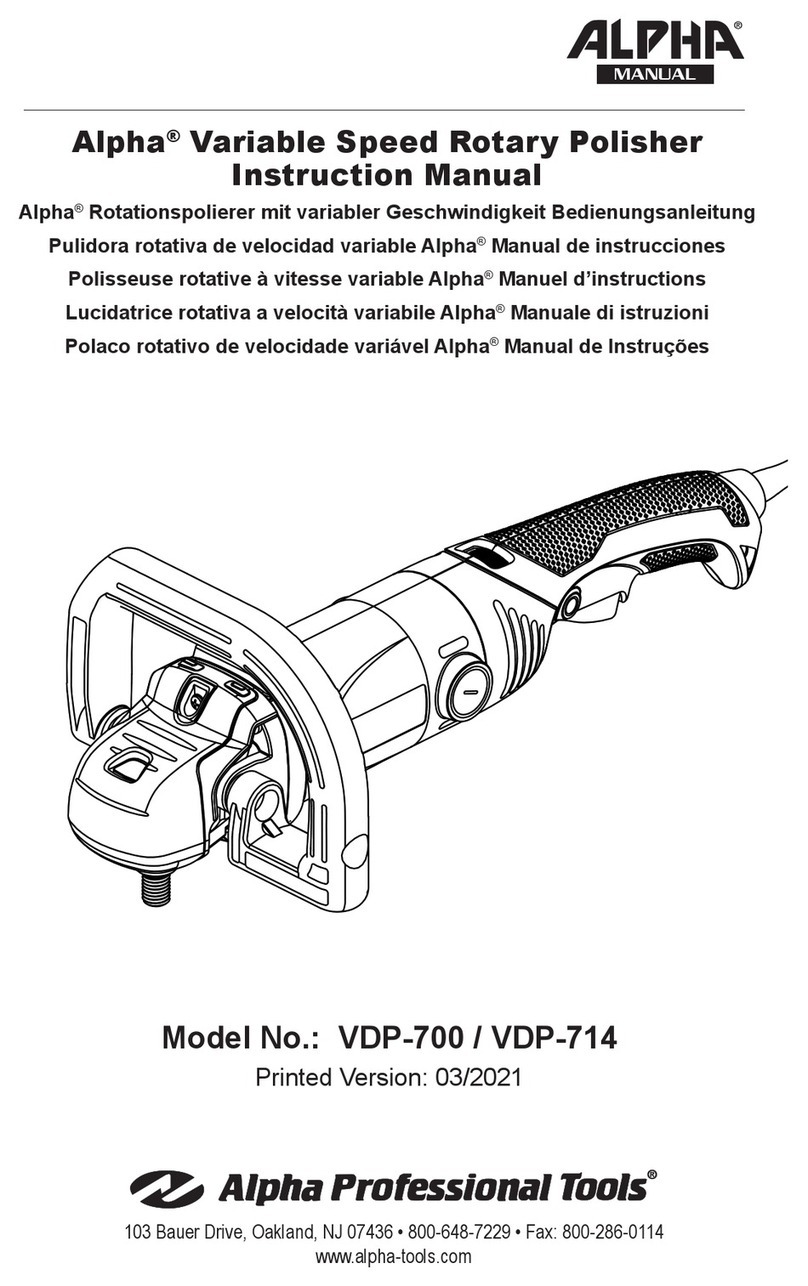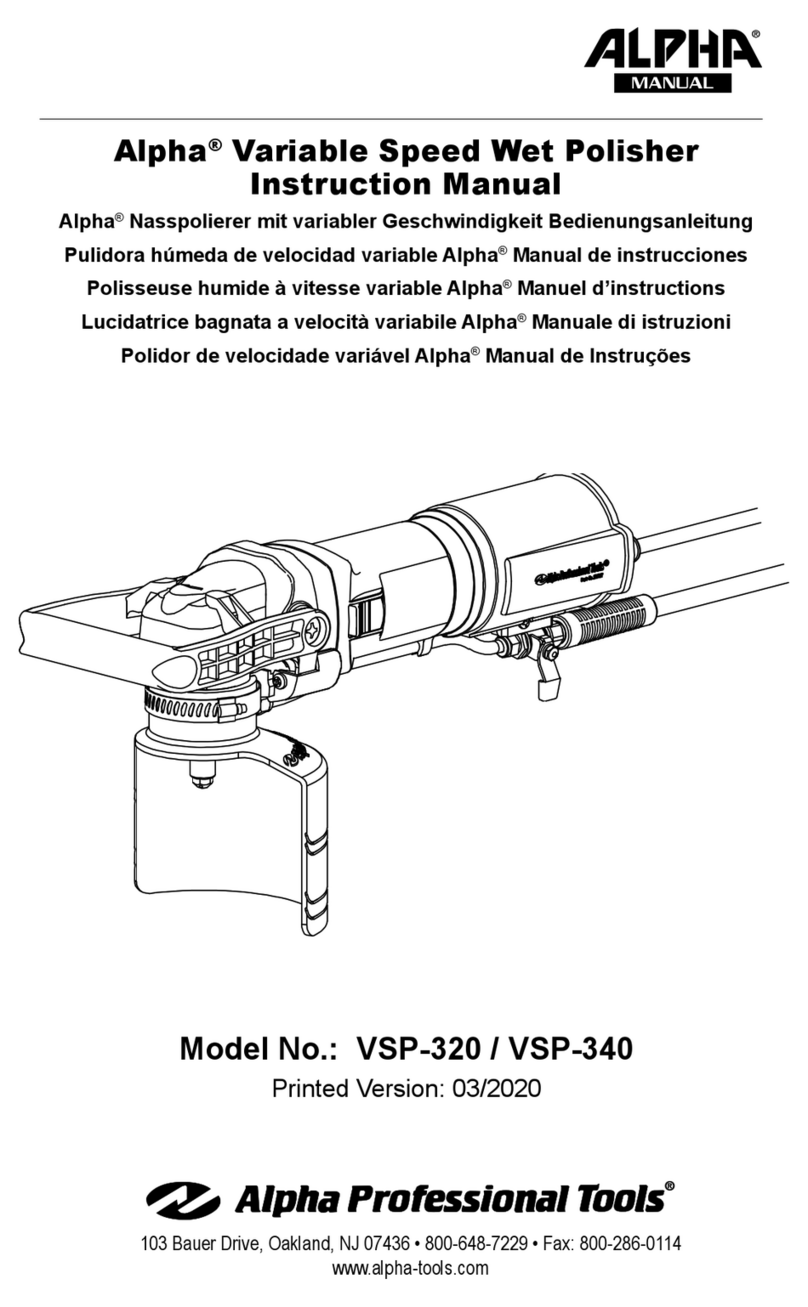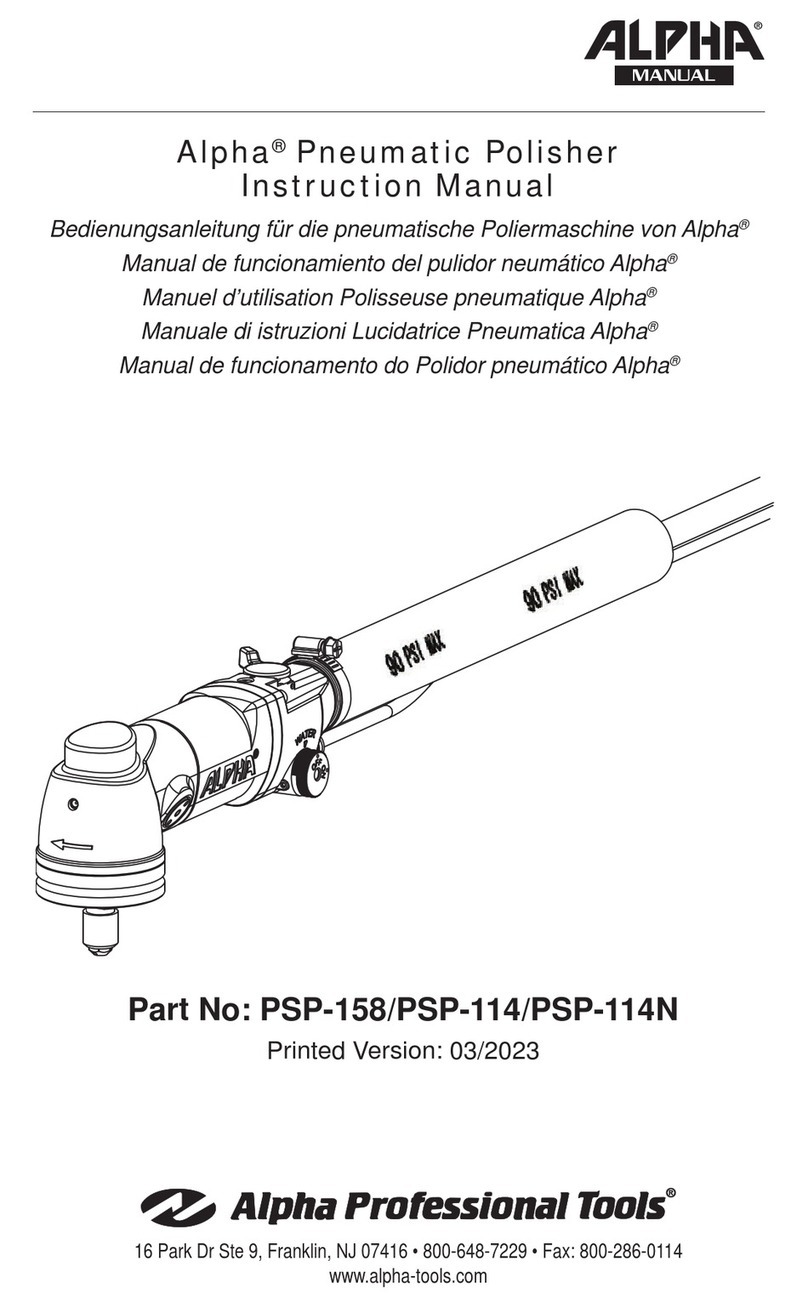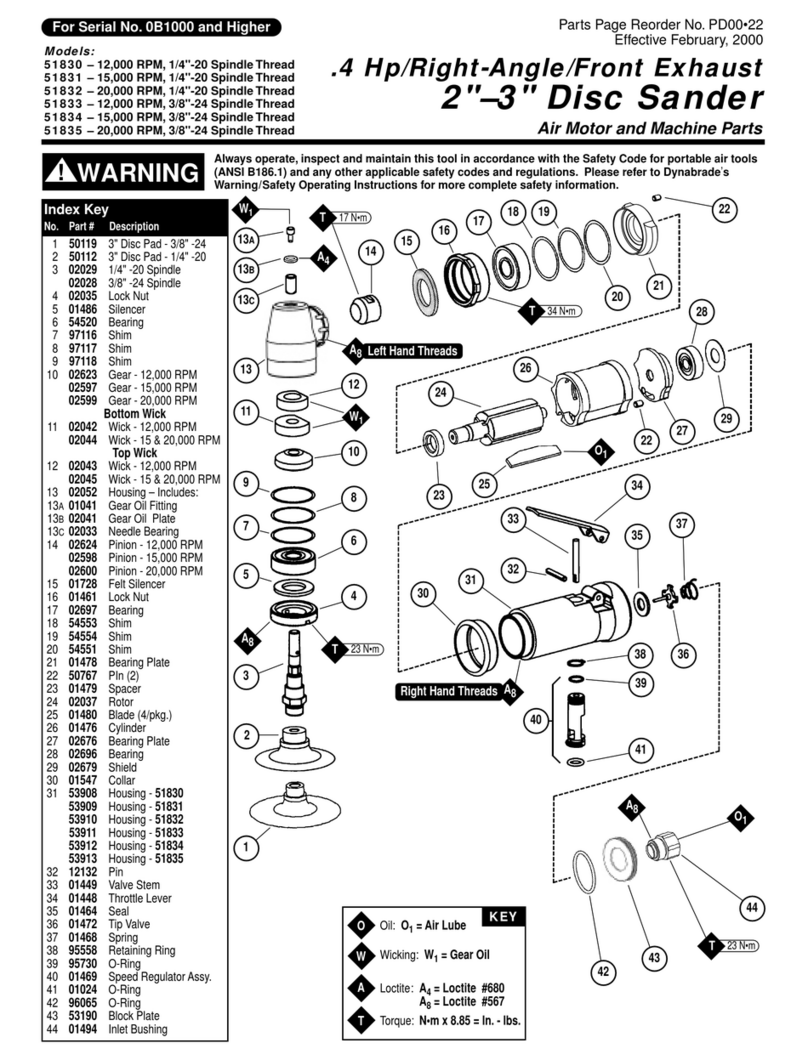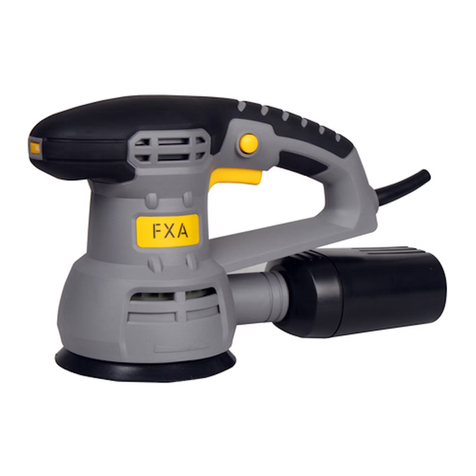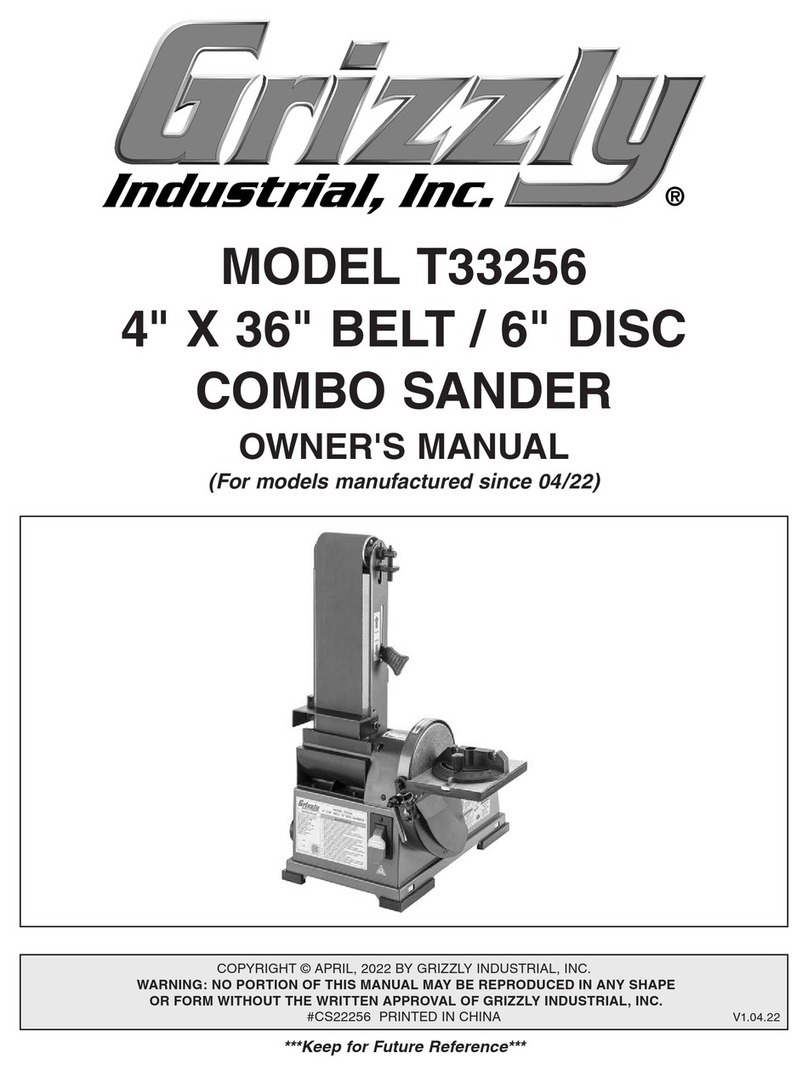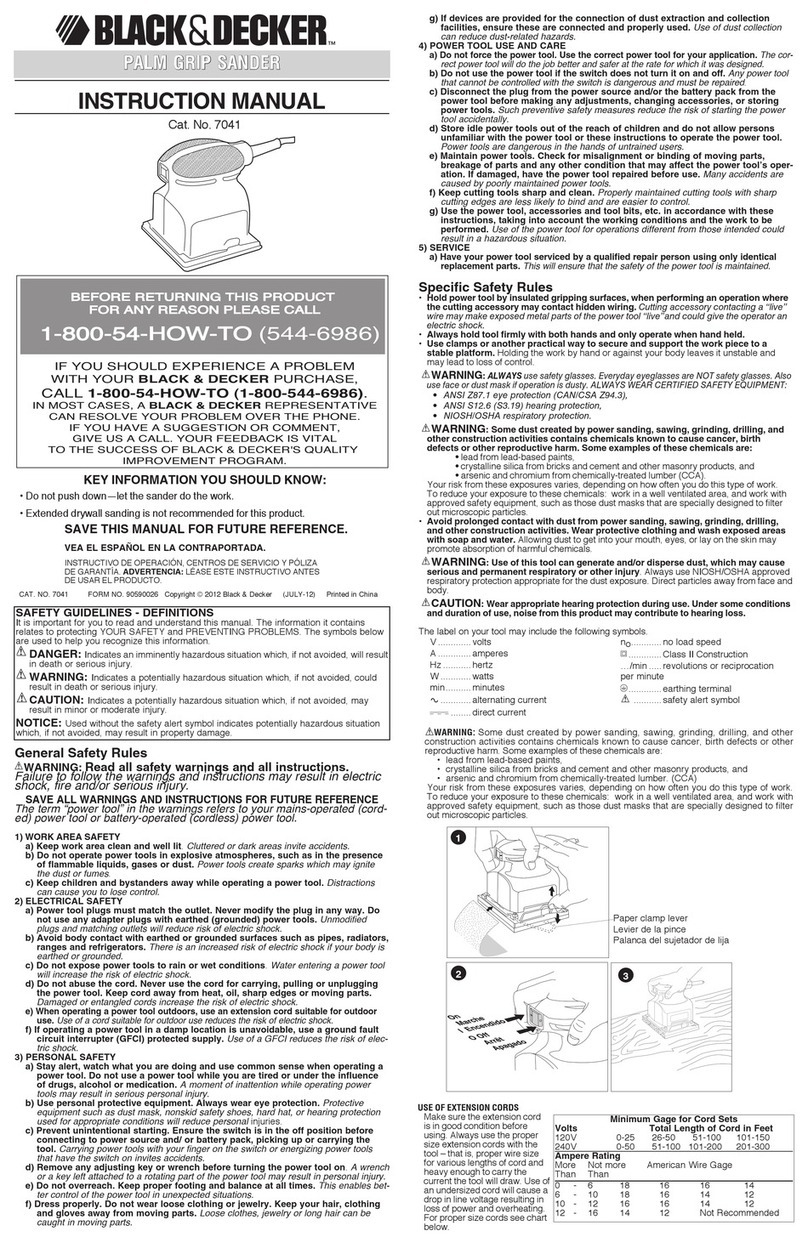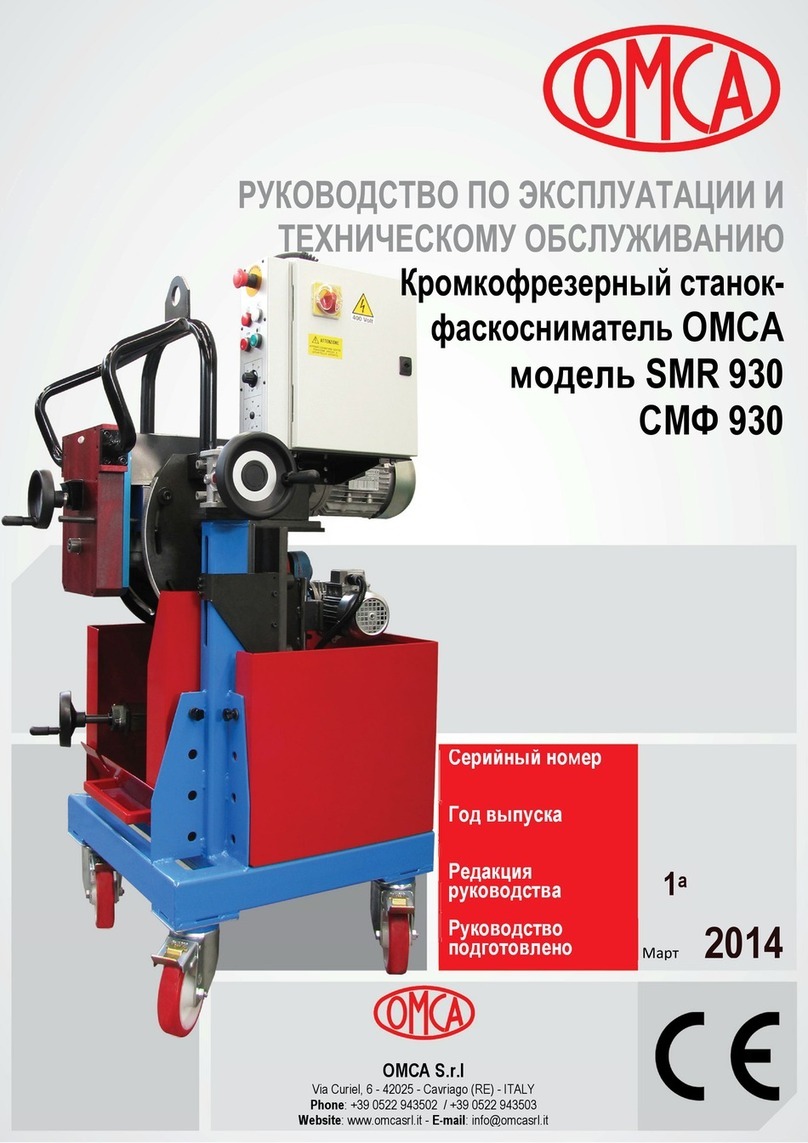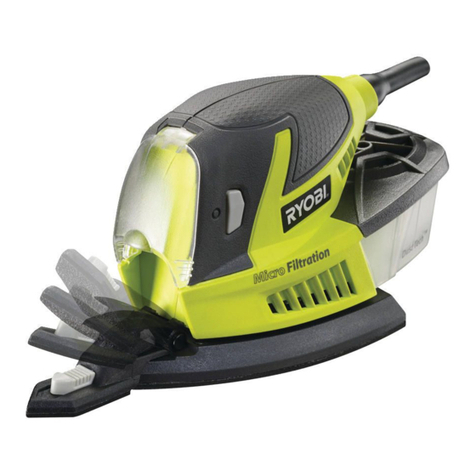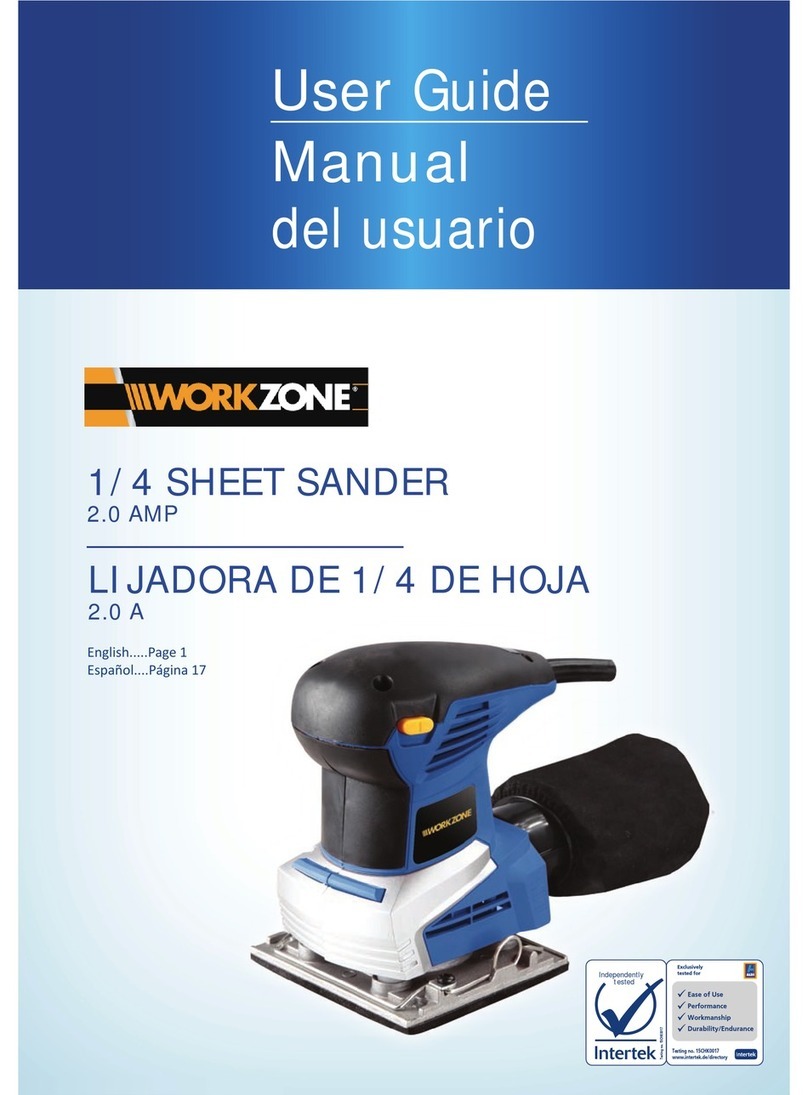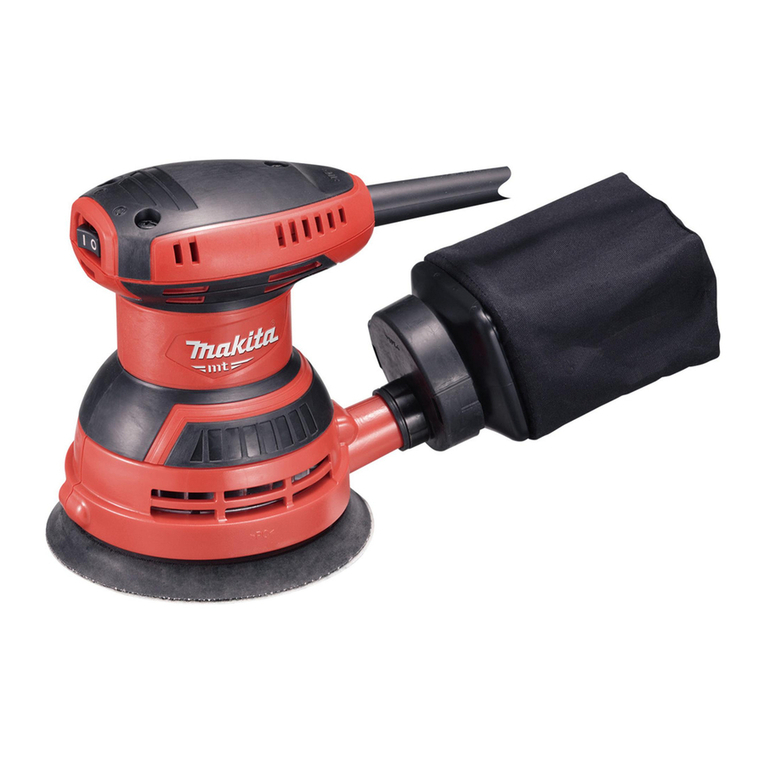4
SAFETY INSTRUCTIONS FOR POWER TOOLS
1. KNOW YOUR POWER TOOL. Read owner’s manual carefully.
Learn its applications and limitations as well as specic potential
hazards particular to this tool.
2. KEEP WORKAREA CLEAN. Cluttered areas and benches invite
accidents.
3. AVOIDDANGEROUSENVIRONMENTS.Keepworkareasasdry
aspossible.Donotusetoolinpresenceofammableliquidsor
gases. Keep the area well lit.
4. KEEPCHILDRENANDVISITORSAWAY.Allvisitorsshouldbekept
a safe distance from the work area. Keep out of reach of children.
5. DON’TFORCETOOL.Itwilldothejobbetterandsaferattherate
for which it was designed.
6. WEARPROPERAPPAREL.Donotwearlooseclothingorjewelry
as it can get caught in moving parts. Rubber gloves and insulated
non-skid footwear are recommended. Wear protective covering to
contain long hair.
7. WEAR PROPER EYE PROTECTION. All users and bystanders
must always wear proper personal eye protection which conform with
ANSI/ISEAZ87.1(CAN/CSAZ94.3).Alsouseafaceordustmaskif
operationisdusty.Alwayswearcertiedsafetyequipment.
8. WEAR PROPER EAR PROTECTION. All users and bystanders
mustwearproperpersonalearprotectionwhichconformswithANSI
S12.6(S3.19)hearingprotection.
9. WEAR PROPER RESPIRATORY PROTECTION.All users and
bystanders must wear proper personal respiratory protection. Always
useNIOSH/OSHAapprovedrespiratoryprotectionappropriateforthe
dust exposure.
Warning: Some dust created by power sanding, sawing, grinding, drilling,
polishing and other construction activities contains chemicals known to the
State of California to cause cancer, birth defects, or other reproductive harm.
Some examples of these chemicals are:
- Lead from lead-based paints
- Crystalline silica from bricks, cement and other masonry products, and
- Arsenic and chromium from chemically-treated lumber.
Your risk from these exposures varies, depending on how often you do this
type of work. To reduce your exposure, work in a well ventilated area, and
